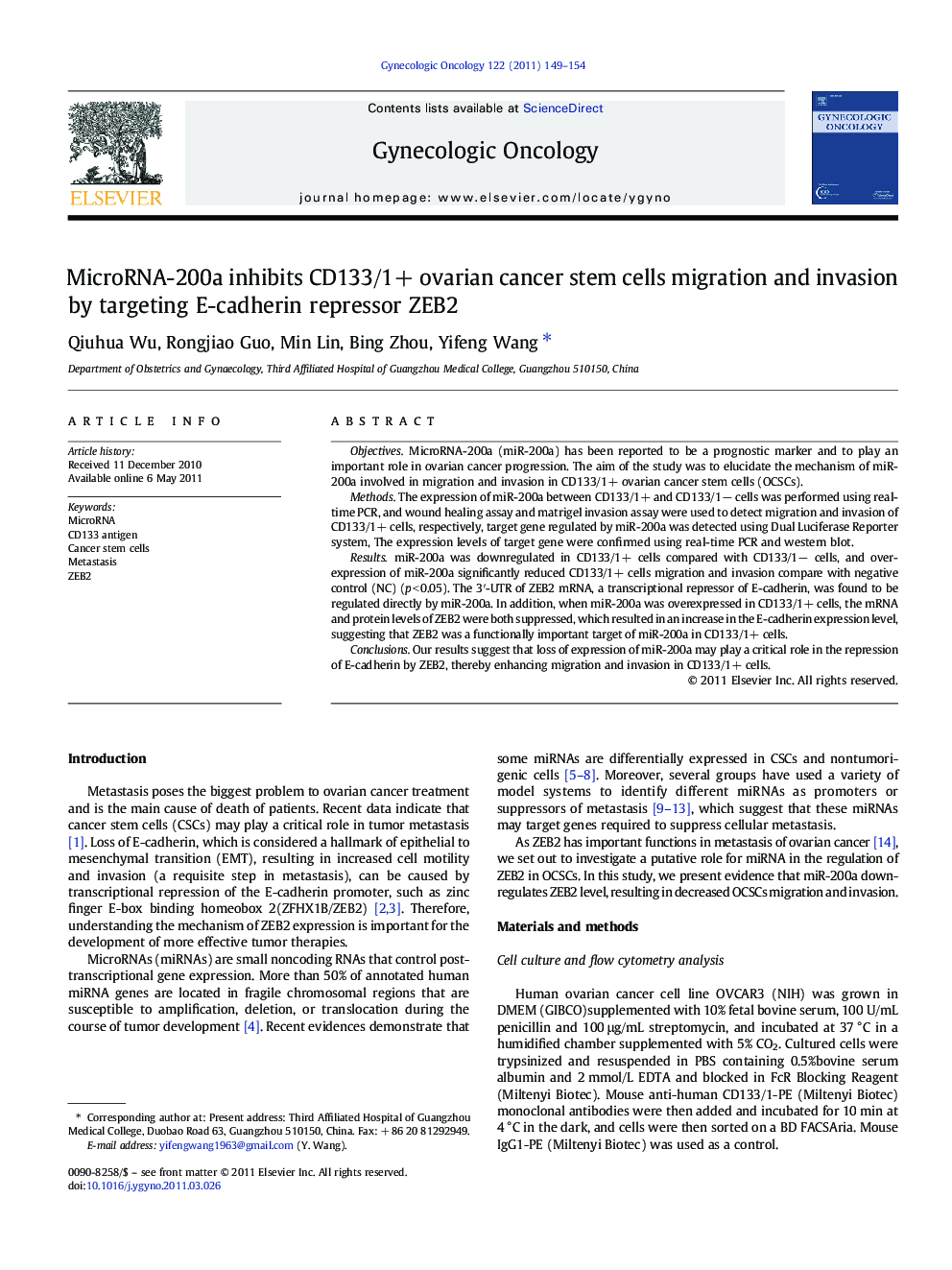| Article ID | Journal | Published Year | Pages | File Type |
|---|---|---|---|---|
| 3943027 | Gynecologic Oncology | 2011 | 6 Pages |
ObjectivesMicroRNA-200a (miR-200a) has been reported to be a prognostic marker and to play an important role in ovarian cancer progression. The aim of the study was to elucidate the mechanism of miR-200a involved in migration and invasion in CD133/1+ ovarian cancer stem cells (OCSCs).MethodsThe expression of miR-200a between CD133/1+ and CD133/1− cells was performed using real-time PCR, and wound healing assay and matrigel invasion assay were used to detect migration and invasion of CD133/1+ cells, respectively, target gene regulated by miR-200a was detected using Dual Luciferase Reporter system, The expression levels of target gene were confirmed using real-time PCR and western blot.ResultsmiR-200a was downregulated in CD133/1+ cells compared with CD133/1− cells, and overexpression of miR-200a significantly reduced CD133/1+ cells migration and invasion compare with negative control (NC) (p < 0.05). The 3′-UTR of ZEB2 mRNA, a transcriptional repressor of E-cadherin, was found to be regulated directly by miR-200a. In addition, when miR-200a was overexpressed in CD133/1+ cells, the mRNA and protein levels of ZEB2 were both suppressed, which resulted in an increase in the E-cadherin expression level, suggesting that ZEB2 was a functionally important target of miR-200a in CD133/1+ cells.ConclusionsOur results suggest that loss of expression of miR-200a may play a critical role in the repression of E-cadherin by ZEB2, thereby enhancing migration and invasion in CD133/1+ cells.
Research Highlights► miR-200a was downregulated in CD133/1+ cells compared with CD133/1− cells. ► Overexpression of miR-200a significantly reduced CD133/1+ cells migration and invasion. ► ZEB2 is a functionally important target of miR-200a in CD133/1+ cells.
